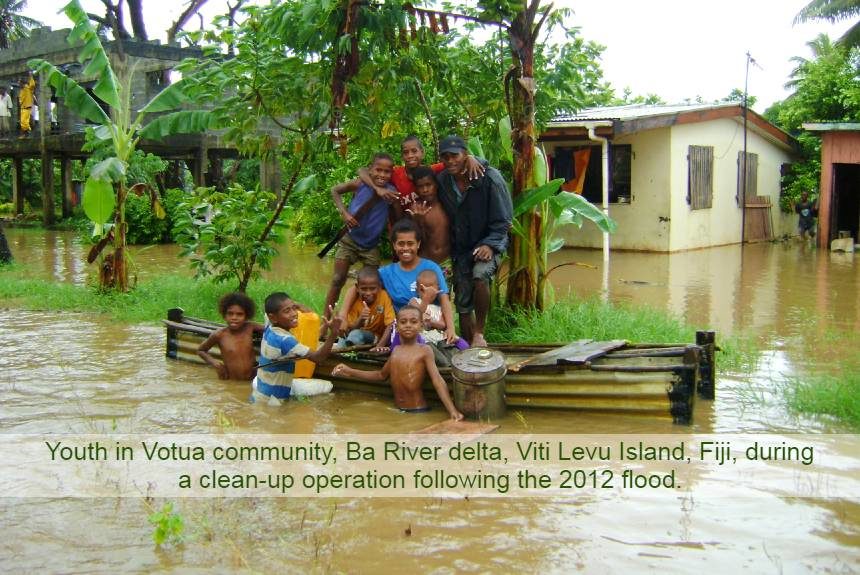The World Risk Report 2019 included Fiji and Cambodia in its top 20 most at-risk countries due to their high exposure to climate-related hazards. The Mekong River, which runs in the middle of Kratie province, is susceptible to climate change effects such as temperature rise and changing rainfall patterns, making the area highly flood-prone.
Households in Kratie’s Prek Prasop district live with seasonal floods, and to cope with them, they have built their houses on stilts. Between 1996 and 2017, severe floods affected more than half a million residents in Kratie province.
Conversely, Fiji’s location in the Pacific Ocean makes it prone to sea-level rise, tropical storms, and cyclones that can trigger flash floods, erosion, and landslides.
Strengthening both countries’ adaptive capacity and resilience to cope with climate change threats is crucial.
Researchers used two general methods to collect data: eliciting local knowledge and gathering scientific data through remote sensing (RS) technology and field surveys.
Researchers employed semi-structured interviews, in-depth narrative interviews, and focus group discussions with participants when gathering local knowledge.
For a scientific flood risk assessment, researchers collected the following data: topographic and hydrological data, land use information, farming systems, socio-economic conditions, and local water management systems.
The study identified four types of growing risks posed by climate change:
- risks across space,
- risks across time,
- risks across assets and
- risks across livelihood.
To mitigate risks, a correlated adaptation strategy such as mobility, storage, diversification, communal pooling, and market exchange would be needed. The goal of climate adaptation strategies is to achieve a “secured livelihood” in post-disaster environments in rural communities.
The study’s definition of a “secure livelihood” involves the intersection of food, water, and energy. The security of these basic needs is also linked to socio-cultural security.
During interviews and group discussions, researchers found that participants demonstrated thorough knowledge and understanding of the local flood flows, extent, and community impacts.
They provide more detailed information than the data supplied by hydrology and remote sensing approaches at a local scale.
Hence, researchers suggest using local knowledge and scientific data when formulating climate adaptation planning and strategies is vital.
The study also presents various local climate adaptation practices and coping strategies that individual households and communities apply during and after disasters. It gives examples of household and community short-term coping and long-term adaptation practices.
Regarding external interventions, like relocating communities, an example cited in the study demonstrates that sometimes interventions without proper local consultations can fail and contribute to communities’ maladaptation.
Understanding local cultures, values, and norms and consultation with local communities are essential when planning climate adaptation strategies.
To read the entire study, click the link below:
Source:
Neef, A., Boruff, B., Bruce, E., Ngin, C., Pauli, N., Davies, K., . . . Weber, E. (2020). Climate change adaptation in disaster-prone communities in Cambodia and Fiji. APN Science Bulletin, 10(1). doi:10.30852/sb.2020.1142
PHOTO CREDIT: Votua Community through Andreas Neef



Leave a Reply